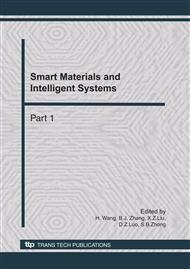p.949
p.956
p.961
p.966
p.971
p.976
p.980
p.984
p.990
Benefits Assignment Mechanism for Construction Machinery Supply Chain Based on Improved Cooperative Game Model
Abstract:
Benefits assignment in the construction machinery supply chain business cooperation is the crucial and the most prominent conflicts issue, it plays a decisive role on sustained and stable development of cooperative relations. In this paper, the cooperative game theory and methods applied to the benefit assignment in the construction machinery supply chain management, and on this basis, the benefits of various cooperative enterprises are assigned by a comprehensive cooperative game model with the Shapley value model including risk of correction factor and the investment weight correction factor according to investment in the construction machinery supply chain, while a numerical example to demonstrate the method of science and rationality.
Info:
Periodical:
Pages:
971-975
Citation:
Online since:
October 2010
Authors:
Price:
Сopyright:
© 2011 Trans Tech Publications Ltd. All Rights Reserved
Share:
Citation:


